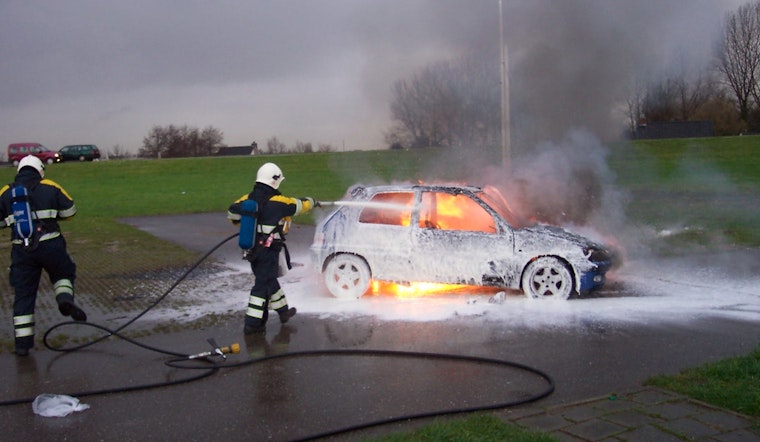
Toxic chemicals present in firefighters gear have become a recent concern. A mounting body of evidence seems to suggest that industrial compounds called PFAS (per- and polyfluorinated substances) found in their gear may be contributing to the risk of cancer among firefighters, according to a CBS News report.
PFAS are well-documented for their ubiquity in everything from clothing to food packaging, and their association with health problems, including several types of cancer. Alarmingly, rumors say, firefighter gear containing PFAS could be betraying the very people it was intended to protect. And given that cancer has now replaced heart disease as the leading cause of death among firefighters, the implications of these findings seem all the more consequential.
The International Association of Fire Fighters (IAFF) has outlined the elevated risk firefighters face when it comes to cancer, indicating that they are twice as likely to develop testicular cancer and mesothelioma compared to the general population. However, only relatively recently have firefighters begun to consider their gear as a potential source of carcinogens, according to an Associated Press article.
One of the key defendants in lawsuits filed by firefighters, 3M Co., has already begun phasing out the use of PFAS in its products. The company has announced plans to cease manufacturing PFAS by the end of 2025 and replace them with less harmful alternatives. However, not all manufacturers share the same outlook, with W. L. Gore & Associates maintaining that the PFAS compound PTFE used in its clothing is non-toxic and safe for firefighters.
Despite the chemical industry's assurances, concerns about the presence of PFAS in firefighter gear have been steadily escalating since 2016. It began when the wife of a retired firefighter, Diane Cotter, raised concerns about her husband's firefighting gear after he was diagnosed with prostate cancer. At the time, many firefighters were either unaware of PFAS or did not know that it was present in their gear.
Responding to Cotter's concerns, gear manufacturers initially claimed that only trace amounts of PFAS were used and that they were safe. However, a subsequent investigation by Graham Peaslee, a University of Notre Dame professor who studies PFAS, revealed significantly higher levels of PFAS in samples of firefighter gear submitted for testing. Peaslee also identified the presence of these harmful chemicals on gloves and in firehouse dust, further heightening concerns.
Research continues to explore the correlation between PFAS-contaminated gear and cancer incidence among firefighters. Courtney Carignan, an exposure scientist and epidemiologist at Michigan State University, found elevated levels of PFAS in the blood of more than half of the 18 firefighters she tested from Nantucket and Fall River, Massachusetts. Moreover, Carignan discovered that PFAS from the gear was being transferred to the skin of firefighters. However, the investigation into the gear's contribution to increased PFAS levels in the blood and its role in causing cancer remains ongoing.
In response, some firefighters have embarked on a campaign to demand safer alternatives from gear manufacturers and hold them accountable for their use of PFAS. Several states, including Washington, New Hampshire, and New York, have introduced or enacted bills that require companies to disclose the presence of PFAS in their gear, according to the environmental health coalition Safer States. Additional states are considering legislation that would provide funding for the purchase of PFAS-free gear or restrict the manufacture and sale of gear containing the chemicals.
Replacing contaminated gear, however, is no simple task. Aside from the considerable cost – with a single set of gear costing upwards of $4,000 – finding alternatives has proven challenging. While some companies have begun promoting PFAS-free outer layers, the IAFF warns this doesn't address the problem, since the other two layers of the gear continue to contain the toxic chemicals. Moreover, according to an IAFF lawsuit filed in March, the National Fire Protection Association (NFPA) standard for gear can only be met using PFAS-infused materials.
Fire departments grappling with the potential consequences of PFAS-tainted gear have started looking for ways to limit exposure. For instance, the Brockton Fire Department in Massachusetts now discourages firefighters from wearing their gear in living quarters and urges them to wash it after fighting fires. The department has also limited the use of gear to only serious calls, such as fires and car accidents.

-1.webp?w=1000&h=1000&fit=crop&crop:edges)







